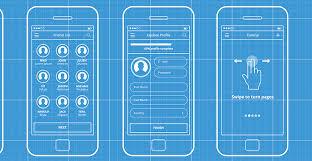Design Tips to Boost Learnability and Discoverability within Your App

The easier your mobile application is to learn to use and the easier it is for your users to find the functionality to learn it – the more useful that application is likely to be to the user. The user experience is also likely to greater.
What precise is learn-ability and discover-ability?
The easier the way users learn to use the app and discover helpful features, the better user experience is ensured. It not only refers to the ease of discovering features within app but also learning how each feature allows them to get what they want.
What factors affect learn-ability of an app?
Learn-ability get affected by various factors, most importantly the design elements. Let us have a look at the various affecting learn-ability within an app.
- Learn-ability depends upon how crucial a role the app serves in the life of users. It is an app that deserves to be used regularly or every now and then? In that case users will give more effort in learning and knowing the effectiveness of the app in detail.
- More frequently an app is used more familiar it becomes and easier it becomes for users.
- Simpler the interface, cluster of features and visual hierarchy an app offers, better the learn-ability and ease of use is ensured.
- Limited functions, stripped-of, clutter free design and easy navigation allows easy learning and discover-ability.
Typical UI elements that help discover-ability and learn-ability
Some UI elements play defining role in making features discover-able and make the app more learn-able or easy to use. Let us have a look at these UI elements.
- Action bars allows user coming with all the common actions from just one place. Action bars does almost the same what navigation bar does in web apps. They not only remove the screen clutter but also helps user intuitively to complete tasks in a situation.
- By allowing social login you allow users login quickly and save time and energy from the so called registration process. Moreover, from social login also you can access all useful user data.
- By allowing big CTA buttons you allow more easy tapping and actions which is important for mobile screen real estate. Moreover, with the buttons looking prominent the users will feel more prompted to take actions. Users normally detest scrolling down to find the action buttons on their mobile device and you need to design UI keeping this in mind.
- Any UI element may change but as soon as it changes the users should be notified of it. In message apps it is extremely important to show users the digit count of the new messages just on the app icon in lock screen.
- Allow the device level controls to be discovered more easily while using the app. The app should let users easily know how each action can be completed or optimized with device level controls and functions like gestures, swipes, multi-taps, accelerometers, GPS readings, image controls, etc.
- Finally, the designers now can choose from an array of UI patterns that comes loaded with helpful discover-ability elements.
Test the learn-ability and discover-ability of your app
Learn-ability and discover-ability can only be assessed from the usage and so before implementation testing them may be challenging. As most UX designers agree, even prototyping do not help with a clear view of your app learn-ability and discover-ability. This is why, most apps to test learn-ability mostly depend upon the findings in user interaction from a beta version of the app. Moreover, learn-ability needs to be checked quite often and repeatedly with your user base growing and becoming more familiar with the app. So, app learn-ability demands continuous evaluation throughout the lifecycle of the app and its growth.
Discover-ability and learn-ability may be slightly different in their core concepts, but both of them are closely and intricately related to optimize ease of use. As ease of use is increasingly coming the single most important factor to boost user engagement, acquisition, retention and business conversion, every app needs to ensure these two elements in their UX design.
Post Your Ad Here

Comments